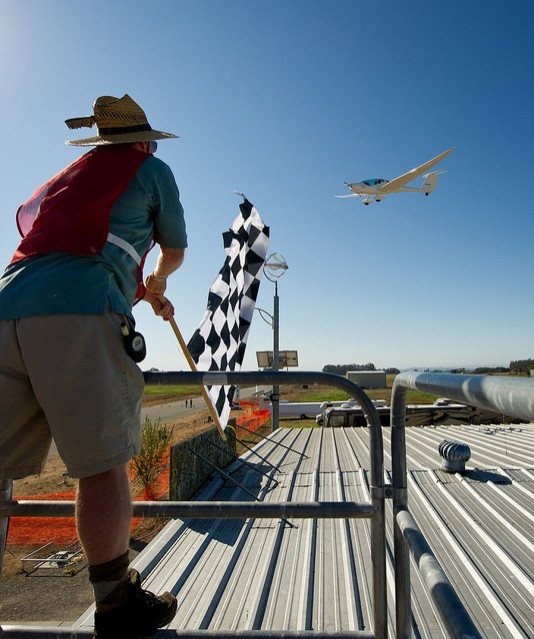Greener Airplanes: Competition Winner Shows Path to More Efficient Aviation

The U.S. government dangled a million-dollar carrot in front of the aviation industry to develop fuel-efficient aircraft and usher in a new electric airplane industry.
On Monday, one competitor, team Pipistrel-USA.com of State College, Pa., came forth as the winner and grabbed the $1.35 million prize in the CAFE Green Flight Challenge, sponsored by search-engine hub Google and awarded by NASA.
The second place prize of $120,000 went to team eGenius, of Ramona, Calif.
The competition was set up as a way to reduce airplane emissions, a cause the U.S. Environmental Protection Agency took up in its request in September for public input on setting standards for nitric oxide, a pollutant that causes greenhouse warming.
NASA congratulates Pipistrel-USA.com for proving that ultra-efficient aviation is within our grasp,
Joe Parrish, NASA's acting chief technologist, said in a press statement. Today we've shown that electric aircraft have moved beyond science fiction and are now in the realm of practice.
The rules of the game: the winning aircraft had to fly 200 miles in less than two hours and use less than one gallon of fuel per occupant, or the equivalent in electricity. The first and second place teams, which were both electric-powered, achieved twice the fuel efficiency requirement of the competition, meaning they flew 200 miles using just over a half-gallon of fuel equivalent per passenger.
Two years ago the thought of flying 200 miles at 100 mph in an electric aircraft was pure science fiction, said Jack W. Langelaan, team leader of Team Pipistrel-USA.com. Now, we are all looking forward to the future of electric aviation.
Aviation is responsible for nearly three percent of carbon dioxide emissions, based on data from the Federal Aviation Administration dated back to 2005.
Aviation's relative contribution to climate change is only expected to grow, as other sectors mitigate their emissions production and demand for aviation continues to increase, stated a December report on pollution from commercial aircraft.
NASA officials stated they hoped the prize, the largest in aviation history, would spur new jobs and new industries for the 21st century.
The competition originally attracted 14 competitors, of which only three fulfilled the requirements, then took to the Charles M. Schulz Sonoma County Airport in Santa Rosa, Calif.
The Comparative Aircraft Flight Efficiency (CAFE) Foundation, a private group that creates and advances the understanding of personal aircraft technologies through research, analysis, and education, managed the competition.
This week's competition marks the culmination of more than two years of aircraft design, development and testing for the teams. It represents the dawn of a new era in efficient flight and is the first time that full-scale electric aircraft have performed in competition. Collectively, the competing teams invested more than $4 million in pursuit of the challenge prize purse.
© Copyright IBTimes 2024. All rights reserved.





















